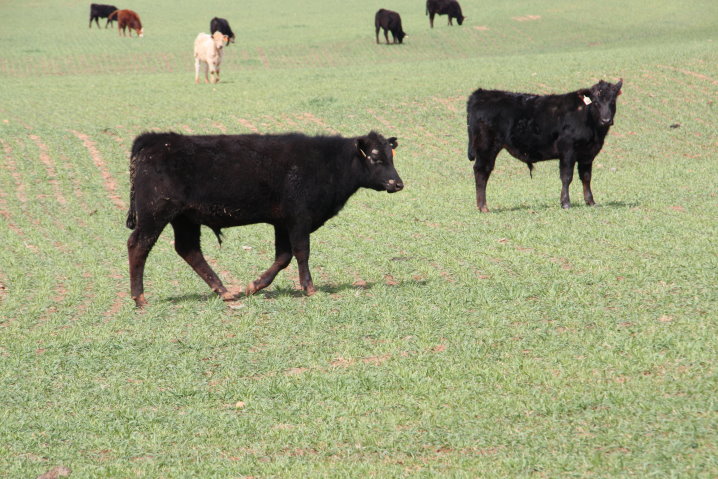
Agricultural News
First Hollow Stem Stage Important For Grazers In Maximizing Grain Production
Wed, 15 Feb 2012 14:50:47 CST
 It's mid-February and OSU Small Grains Extension Specialist Jeff Edwards says it's time for farmers with cattle on wheat pasture to start checking for first hollow stem.
It's mid-February and OSU Small Grains Extension Specialist Jeff Edwards says it's time for farmers with cattle on wheat pasture to start checking for first hollow stem.
First hollow stem is the stage just prior to jointing when the wheat is transitioning from vegetative growth to reproductive growth. It is important in determining the optimal time to remove cattle from wheat pasture.
Wheat leaves are like solar panels that fuel the plant factory. Grazing removes leaves and reduces the size of the solar collector. Wheat leaves are also a reservoir of nitrogen and other nutrients. Time is needed to replace leaf area lost to grazing. That's why it is important to remove cattle at this stage so that the plant can regenerate leaves to collect maximum energy for reproductive growth.
Leaf area recovery depends on several factors. The first factor is the extent of damage caused during the grazing process. This is affected by stocking density and field conditions during the winter. More damage occurs during wet conditions when cattle can trample the plant into the ground. The second factor is the variety's tolerance to grazing. Varieties such as Duster, Endurance and Garrison with increased tillering are generally more tolerant of grazing. The third factor in leaf regeneration is general weather conditions. Cool, wet weather is more conducive to leaf growth than is hot, dry weather. Hot and dry conditions will cause the plant to kick into the reproductive growth stage.
There is always a temptation to graze past the first hollow stem stage, but that is not advisable as cattle gains are generally not sufficient to offset grain yield losses.
There are several tools available at Oklahoma State University's website (available by clicking here) that will help farm operators run their own numbers and scenarios to help make the wheat graze out decision.
Grazing past the first hollow stem stage can yield significant losses very quickly depending on weather conditions. If the conditions are ideal, about a 10 percent loss can be expected if grazing is allowed for two weeks following first hollow stem. Conditions are rarely optimal, and losses of as much as 35 to 60 percent are more likely if grazing continues for two weeks after first hollow stem stage.
To check for first hollow stem, dig plants from a non-grazed area. The plants must be dug because the growing point may still be below the soil's surface. Plants must be selected from a non-grazed area because grazing slows their development.
Split the largest tiller on about ten plants longitudinally upward from the base. Include the area of the stem that was below the soil surface. A razor blade or box cutter works well.
You're looking for the average length of the hollow stem below the developing wheat head in the ten plants to be 1.5 centimeters or half an inch. That's about the diameter of a dime. Plants need to be checked frequently as warm conditions can cause plants to add one centimeter per day. When the length of the hollow stem approaches one centimeter, it's time to make plans to move cattle off the pasture.
Fact sheets and variety comparison charts are available at www.wheat.okstate.edu.
WebReadyTM Powered by WireReady® NSI
Top Agricultural News
More Headlines...



















